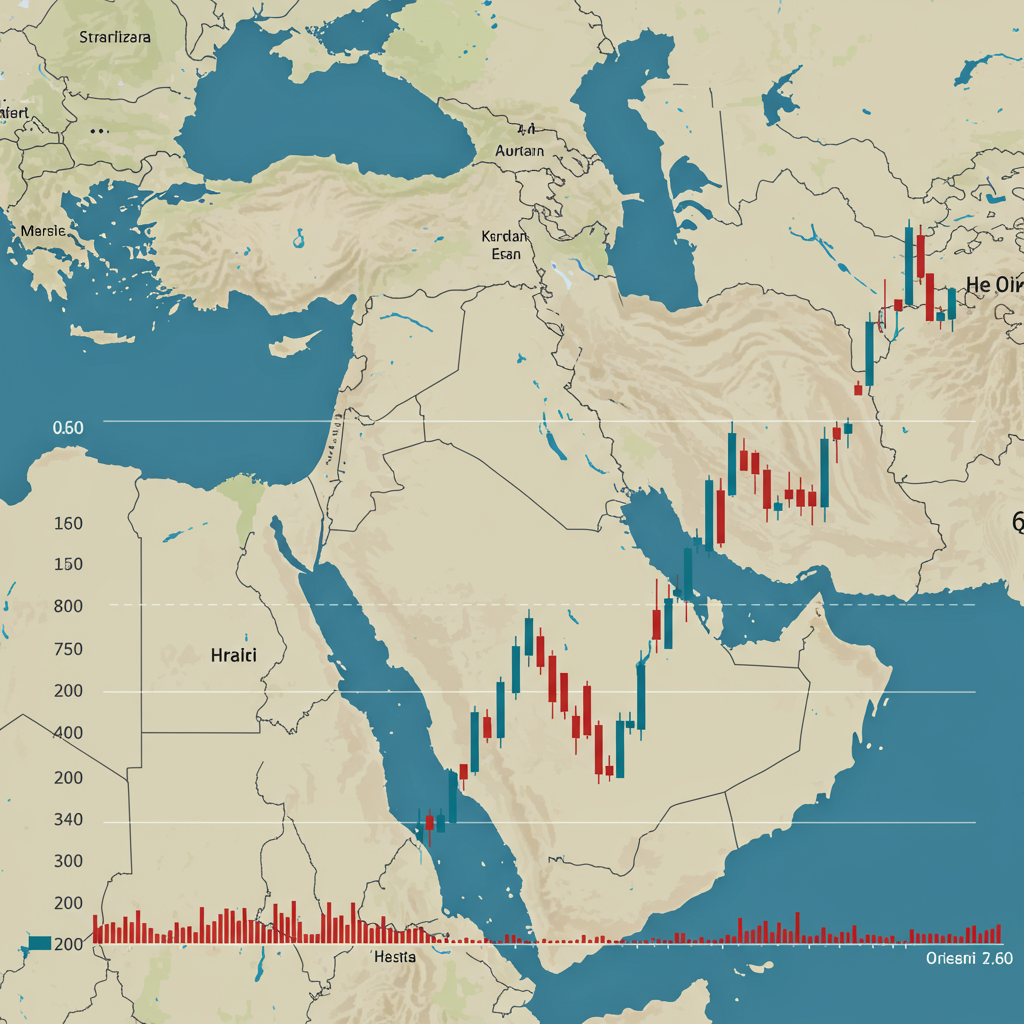The financial world is keenly watching as a pivotal week unfolds, bringing key economic data face-to-face with a stock market basking in the glow of record highs. After notable rallies across major indexes, investors are now bracing for releases that could significantly shape expectations around the Federal Reserve’s next moves on interest rates. Understanding the interplay between incoming data and market sentiment is crucial for navigating the path ahead. This week promises critical insights into the economy’s health, particularly the labor market, offering potential catalysts for market direction amid lingering uncertainties.
Market Momentum Reaches Record Peaks
Recent weeks have seen impressive gains across global markets, propelling benchmarks like the S&P 500 and the Canadian TSX to all-time high levels. The S&P 500 has climbed significantly since its April lows, reflecting a bullish resurgence. This upward trajectory isn’t solely fueled by speculation. Several fundamental factors appear to be driving investor optimism.
One major tailwind has been the perceived easing of geopolitical tensions, particularly in the Middle East, contributing to a notable decline in oil prices. Lower energy costs are generally viewed positively, as they can ease inflationary pressures and boost consumer spending power, especially heading into peak travel seasons.
Another powerful driver is the growing expectation that central banks are poised to lower interest rates. Both the U.S. Federal Reserve and the Bank of Canada have signaled a potential pivot towards easing monetary policy. Discussions from the Fed indicate possible rate cuts in the near future, while the Bank of Canada has already begun reducing its policy rate. This prospect of cheaper borrowing costs is broadly supportive of asset prices, including stocks, and is reinforced by recent data showing contained inflation levels in both countries and signs of softening consumer spending.
Furthermore, momentum in specific sectors, notably U.S. technology and growth stocks, has played a significant role. These areas have demonstrated strong performance, buoyed by robust corporate earnings and continued heavy investment in areas like artificial intelligence (AI) infrastructure. While valuations in these leading sectors have risen, their fundamental strength continues to attract capital.
This Week’s Critical Economic Calendar
Against this backdrop of market strength, the upcoming week presents a packed schedule of economic data releases. Foremost among these is the crucial June jobs report, scheduled for release on Thursday. This report is a vital gauge of labor market health and carries significant weight in monetary policy considerations.
Economists are broadly forecasting a moderation in hiring activity. Projections for nonfarm payroll additions in June sit below the levels seen in prior months. The unemployment rate is also anticipated to tick slightly higher. Alongside the headline numbers, investors will dissect details like average hourly earnings, which provide insight into wage growth, another key inflation indicator.
Beyond the jobs report, the week includes other important labor market data, such as the Job Openings and Labor Turnover Survey (JOLTS). Data points covering manufacturing and services sectors, specifically the ISM Manufacturing and Services indices, will offer a broader look at economic activity across industries. Details on construction spending and productivity will also round out the picture of the economy’s performance. These data releases are not merely statistics; they are tea leaves that the Federal Reserve carefully reads to determine the appropriate course for interest rates.
The Federal Reserve’s Policy Puzzle
The market’s current bullishness is heavily predicated on the assumption that the Federal Reserve will soon begin cutting interest rates. Probabilities tracked by tools like the CME FedWatch Tool show a notable increase in the likelihood of a rate cut occurring by early fall. Specifically, expectations for a cut by the end of September have surged recently.
However, this outlook is not universally shared, even within the Fed itself. Some officials are noting signs of a less dynamic labor market and suggest that downside risks to employment warrant considering earlier rate cuts if inflation continues to ease and overall demand softens. Conversely, others on the Federal Open Market Committee maintain a more cautious stance, preferring to wait for more definitive evidence before adjusting policy. This divergence creates a degree of policy uncertainty for investors.
Economists analyzing the situation often point to September as the most likely timing for a potential Fed pivot. They anticipate that by then, there will be clearer signs of continued demand erosion and a further slowdown in the labor market. The central bank may ultimately prioritize addressing a slowdown in economic growth, potentially viewing other inflationary pressures, such as those from tariffs, as temporary. The “fog in the data” and the unpredictable nature of policy decisions make the Fed’s path a key variable for market watchers.
Navigating Risks Amidst Record Highs
While the stock market has demonstrated resilience and upward momentum, significant risks and uncertainties persist. One notable concern is the potential for inflation to reaccelerate. Tariff-related pressures, in particular, could feed into higher prices in the latter half of the year, potentially eroding consumer purchasing power.
Policy unpredictability also remains a challenge. Recent events have shown that trade negotiations and related policy announcements can shift rapidly, introducing volatility into the market. This uncertainty extends to the corporate sector, where some major companies have cited global trade concerns when withdrawing their financial guidance, making it harder for investors to forecast future earnings.
Despite these headwinds, the market appears to maintain a fundamentally bullish sentiment. Strategists often suggest that investors should use any periods of volatility or pullbacks as potential opportunities. Diversification and rebalancing portfolios can help manage risk in this environment. While the market may experience “gut checks,” the underlying expectation for continued growth, albeit at a potentially moderated pace, remains.
Investment Strategies in a High-Flying Market
For investors looking to participate in the current market environment, various strategies can be considered, even for those with limited capital or seeking different risk profiles. The high nominal price of certain assets, like Bitcoin exceeding $100,000, doesn’t preclude participation.
Strategies for accessing assets with high unit costs include fractional investing, where you buy small dollar amounts rather than full shares or coins. Popular payment apps also offer accessible ways to buy and hold cryptocurrency in small increments. For those preferring traditional brokerage accounts, exchange-traded funds (ETFs) that track asset prices like Bitcoin offer exposure without needing to manage digital wallets.
Another disciplined approach is dollar-cost averaging (DCA), which involves investing a fixed amount regularly regardless of price fluctuations. This strategy helps smooth out volatility and reduces emotional investing decisions. Additionally, investors can gain indirect exposure to high-growth sectors or assets by investing in related companies or thematic ETFs. For example, companies deeply involved in the cryptocurrency ecosystem or those benefiting from massive AI infrastructure build-out offer alternative ways to participate in these trends. Identifying competitively positioned companies that may be temporarily undervalued after a dip is another strategy long-term investors might explore.
Frequently Asked Questions
What makes the upcoming jobs report so important for the stock market?
The June jobs report is crucial because it provides a clear picture of the labor market’s health, including hiring levels and wage growth. This data is a primary factor the Federal Reserve considers when deciding whether to adjust interest rates. Strong hiring or rising wages can signal potential inflationary pressures, making a rate cut less likely, while signs of cooling in the labor market could increase the probability of easing monetary policy.
What are the expectations for the Federal Reserve regarding interest rate cuts?
Market expectations, as reflected in tools like the CME FedWatch Tool, currently lean towards the Federal Reserve implementing an interest rate cut relatively soon, with significantly increased probability seen by September. However, Fed officials hold differing views, with some noting labor market softening that could warrant earlier action, while others remain cautious. Economists often point to September as the most probable timing for a cut, anticipating clearer signs of economic cooling by then.
How can investors approach the stock market when it’s at all-time highs amidst economic uncertainty?
Investing at market highs amidst uncertainty requires a strategic approach. Investors can consider diversifying their portfolios across different asset classes and sectors to manage risk. Using market pullbacks as opportunities to add to quality investments at potentially better prices is also recommended. Strategies like dollar-cost averaging can help smooth out volatility, and exploring indirect investment methods, such as sector-specific ETFs or companies well-positioned in high-growth areas like AI, can offer exposure while managing risk associated with specific assets or market timing.
Conclusion
The current confluence of a stock market flying at record altitudes and the imminent release of pivotal economic data, particularly the jobs report, sets the stage for a potentially defining week. While optimism around future interest rate cuts and easing global tensions has fueled the recent rally, investors must remain aware of the persistent risks posed by potential inflation, policy unpredictability, and global trade dynamics. The Federal Reserve faces a complex decision-making environment, with conflicting data signals adding to the challenge. Navigating this landscape requires informed decision-making, strategic positioning, and potentially exploring diverse avenues for investment exposure. Staying abreast of the incoming data and understanding its implications for monetary policy will be key for investors in the weeks and months ahead.
References
- finance.yahoo.com
- <a href="https://www.aol.com/one-bitcoin-over-100-000-120238905.html?utmsource=flipboard&utmcontent=AOLcom/magazine/Business”>www.aol.com
- www.edwardjones.ca
- finance.yahoo.com
- www.aol.com



